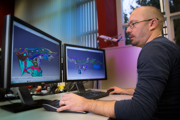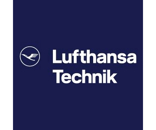

BOEING 737 NEXTGEN CARGO (ATA 25, 52, 53) MODIFICATIONS (68)
AED installation


The use of automated external defibrillators (AED) is essential to increase the chances of survival in case of a cardiac arrythmias such as ventricular fibrillation (VF) and non-perfusing ventricular tachycardia (VT) when used in the first 10 minutes.
AMC1 CAT.IDE.A.220 (b) (4) stipulates that the aircraft operators should carry automated external defibrillator (AED) on board all aircraft equipped with a first-aid kit and required to carry at least one cabin crew.
Easy PAX-to-CARGO conversion, using CARGO SEAT COVERS


Proponent provides a PAX-to-CARGO, re-usable solution in offering fire retardant CARGO SEAT COVERS to protect seats during the transport of all types of cargo.
Key characteristics:
- Seat Cover is made out of a Coated Fabric or Nylon
- Available in Black and Anthracite
- Re-usable solution
- Waterproof material
- Easy Installation, no special tooling
- Fire retardant per CS 25.853 (a)(1)(ii)
Available Standard Sizes:
4-Seater: 1990x1100x600 mm
3-Seater: 1600x1100x600 mm
2-Seater: 1020x1100x600 mm
AED Philips Heartstart FRx 861304/Heartsine Samaritan PAD 350


Automatic External Defibrillators (AED) in Aviation Use
Automatic External Defibrillators (AEDs) are becoming increasingly common in daily life. Recognized national health authorities in several countries now recommend the use of AEDs in public and private environments, including aviation.
As a result, operators are being advised by these health institutes to install AED equipment on board aircraft.
To support this initiative, AMC1 CAT.IDE.A.220(b)(4) has been issued, providing additional guidance. This is further explained in EASA FAQ No. 19169, available at: https://www.easa.europa.eu/faq/19169
While AED units are widely certified for civil (non-aviation) use, demonstrating compliance with DOA 160 standards for aerospace applications can sometimes be challenging.
Fokker Services has successfully conducted EMC (Electromagnetic Compatibility) verification testing for the following aircraft types:
-
Fokker 50
-
Fokker 70/100
-
Embraer 170/190
-
De Havilland Dash-8
The testing was performed using the following commercially available AED models:
-
Philips HeartStart FRx (861304)
www.medical.philips.com -
Heartsine Samaritan PAD 350
www.heartsine.com
Certified DE-modification of Obsolete or Custom STC Installations


As part of lease return, phase-out, or aircraft transition processes, removal or reversal of previously installed STCs is often required. These could include obsolete systems, lessee-specific modifications, or customer-tailored configurations no longer applicable for the next operator.
Fokker Services provides certified engineering support for the full demodification process, ensuring compliance, traceability, and airworthiness restoration aligned with the requirements of the new lessee or owner.
Certified LOPA (Layout of Passenger Accommodation) Engineering Support


Whether it’s a minor seat row adjustment or a complete VIP interior configuration, Fokker Services provides flexible, certified LOPA engineering support to match your operational and regulatory needs.
Our services are ideal for aircraft transitions, reconfigurations, or completions, ranging from simple cabin layout changes to high-end executive interiors. We support airlines, lessors, MROs, and VIP operators with tailored layout solutions backed by EASA DOA approval.
Boeing 737 VIP Completion

Boeing 737 VIP CompletionThe aircraft conversion consists of replacing and modifying the standardBoeing base line interior partly byinstalling a new VIP interior in the forward section, installing newmonuments in the aft section and theinstallation and/or
Installation Cargo-Cabin Airflow Metering Devices
Installation Cargo-Cabin Airflow Metering Devices



